The Turner Prize is just the start of Blackpool’s cultural ambitions
and live on Freeview channel 276
This is the ambition of two major players in the town’s contemporary art scene - Garth Gratrix, queer artist and owner of independent space Abingdon Studios, and Paulette Brien, curator of the Grade II-listed, council-run Grundy Art Gallery.
It sounds like a pipedream, but is it? Back in the early-noughties, few people would have anticipated Liverpool being selected as Turner’s host city, not once but twice. And Hull or Eastbourne holding one of the world’s most famous art awards? Surely even more unlikely.
Advertisement
Hide AdAdvertisement
Hide AdYet, with the push in recent years to make arts sector funding less London-centric - see also last month’s decision to move English National Opera to Greater Manchester - the Prize now makes a biennial journey into the regions.
And with arts leaders in Blackpool working with the local authority to draw up a five-year Cultural Plan, it’s the right time to set out big aspirations.
“Why can’t Blackpool have that scale of ambition?” demands Garth, who founded Abingdon Studios in 2014.
“I say Turner Prize and people go ‘it’s too arty-farty’, but I say it with the mentality of pushing the boundaries, being bold and going against the grain. It’s still a much-antagonised art prize. A lot of people have an opinion on it, just as people have an opinion on Blackpool.
Advertisement
Hide AdAdvertisement
Hide Ad“And if you can start to see ideas on a bigger scale, I think that’s going to have a real impact on the people of Blackpool to even consider having a creative career.”
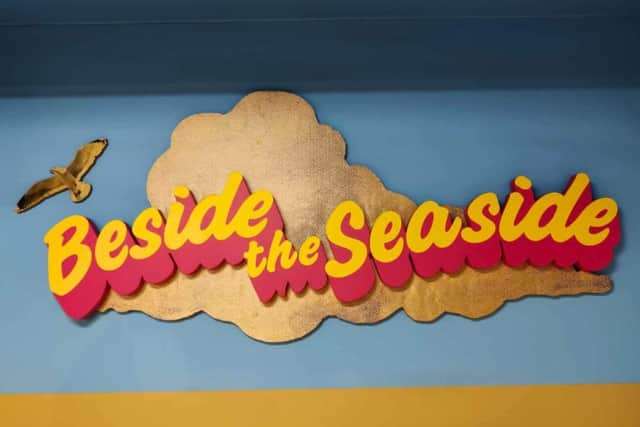

Garth’s own career could also be seen as challenging expectations. They grew up in the village of Thornton, on the Wyre coastline - “the old clichés of broken family, working class, no money” and where “there had been no conversations that art is a career path, at all”.
They initially studied at nursing college in Lancaster: “Once you’ve had a lecture on bedpans you suddenly realise ‘is that what I want for the next 50 years?’.”
Instead, they studied Fine Art at the University of Central Lancashire, then became “an on-the-ground grafter, making work freelance” before returning to Blackpool in 2011 due to a mixture of needing to care for family members and lack of money to fund an MA.
Advertisement
Hide AdAdvertisement
Hide AdGarth was working as a project manager for community arts organisation LeftCoast and carrying out their own research into the need for artist-led studio spaces, when they realised they had a decision to make.
“It was that difficult choice of do I move from where I’m from or do I make it work here and have a different level of confidence about the place I’m from, and shift some perceptions,” says Garth, whose own recent exhibitions include Cheeky Felicia in Scarborough’s Woodend Gallery and curating Wink Wink, a celebration of queer lived experience at the Whitaker in Rossendale.
They chose to stay, not only to develop their own career but also to support other Blackpool-based artists at Abingdon Studios. There are 10 studios and a project space over two floors above Abingdon Street Market, in a former police station, which was later a traditional market and is now home to an independent food hall and shops. Artists from around the UK are invited to exhibit in the project space to open a dialogue between those from Blackpool and elsewhere.
At the time Garth moved back to Blackpool, the town’s arts scene “seemed very small”.
Advertisement
Hide AdAdvertisement
Hide Ad“The language at the time was ‘there was no money, so we can't do anything bigger’ versus just because there isn't the money there doesn't mean that an idea can't be ambitious or your idea can't connect into some national context or relevance,” they say.
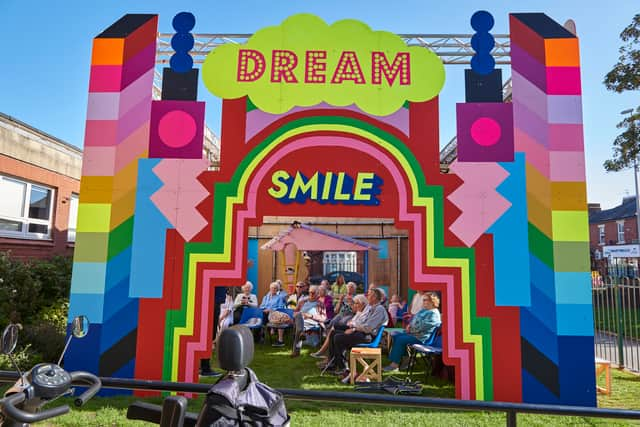

“Even if it's a small painting on the wall, it can still have a much bigger voice that it's connected to.”
There was some infrastructure however, with the Grundy Art Gallery and the Grand Theatre both receiving regular Arts Council England funding as National Portfolio Organisations. Blackpool Council had a Head of Culture and a wider remit as a commissioner of work rather than the more strategic role it holds today, and there were ripples of change coming in the form of grassroots organisation Aunty Social and LeftCoast, one of the first Creative People and Places programmes funded by Arts Council England to engage local communities.
A few years later, The Old Electric would open as a community arts space in the former Princess Electric Theatre on Springfield Road.
Advertisement
Hide AdAdvertisement
Hide AdOver a decade on and the scene is less disparate. Arts organisations work more closely together, not only in creating work but in setting out a vision for the future.
Abingdon Studios, the Grundy and LeftCoast are among those involved in putting together the five-year Cultural Plan with the local authority to add the arts to the town’s entertainment and heritage offer. The initiative was sparked by the town being chosen by Arts Council as one of 54 places across the UK to feature in the funder’s Let’s Create strategy, which aims to embrace culture outside London.
Central to the plan, they agree, has to be local people - to ensure work being created is as relevant to residents as it is to visitors from elsewhere.
One organisation committed to community engagement is LeftCoast, which has spent a decade building trust with Blackpool residents.
Advertisement
Hide AdAdvertisement
Hide Ad“Artists are used to approaching things differently,” says Laura Jamieson, creative producer at LeftCoast and an artist at Abingdon Studios. “We’re used to going ‘this isn’t working, how can we make it work in a different way?’.
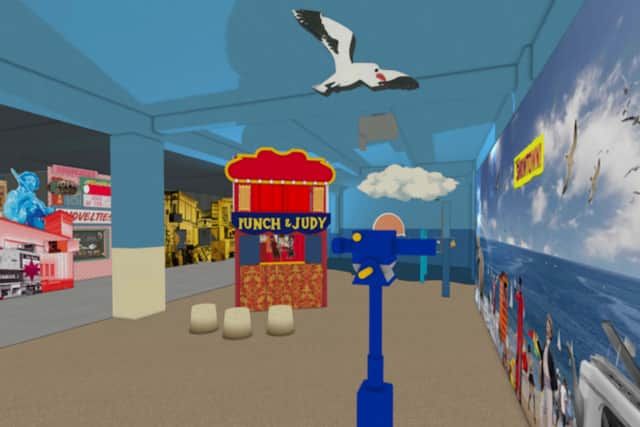

“We’re setting up a community ice cream company at the moment, and you might ask why is that coming from an arts organisation? It’s because there are artists behind it looking for alternative conversations, for ways to model alternative economies that might make money from the tourist trade and bring it back to the neighbourhood.”
In partnership with Blackpool Coastal Housing, LeftBank’s community producers collaborate with local people to identify subjects that are most important to them at that particular time.
“I always think it's a bit like finding the golden thread,” says Laura, whose own art practice focuses on memories and our relationships to moments in history.
Advertisement
Hide AdAdvertisement
Hide Ad“We have lots and lots of conversations, there are lots of cups of tea, and there's lots of going to meet people. Then all of a sudden you go ‘that's the thread, we're going to pull on that’.”
Something unexpected always comes out of these community collaborations. An empty office space in Mereside has been transformed into Langdale Library and Laundry Room, a modern washhouse that addresses the need for easily-accessible washing facilities while providing a space for people to tell stories and share wisdom. This received a commendation in RIBA Journal’s MacEwen Awards in 2023.
Another project, People’s Pantry, created two community spaces, one an artist-led design by Emma Denby, where local people can collect excess produce from local allotments and supermarkets, as well as learning how to grow and eat seasonally.
While community buy-in is crucial, it is only one part of a successful cultural strategy. As we’ve seen in places like Liverpool and Hull, where culture has been identified as an economic driver, the impetus for change has to come from the very top.
Advertisement
Hide AdAdvertisement
Hide Ad“There is recognition by the council of the value that arts and culture plays, without a doubt,” says Paulette Brien, who has been curator of the Grundy art gallery since 2017.
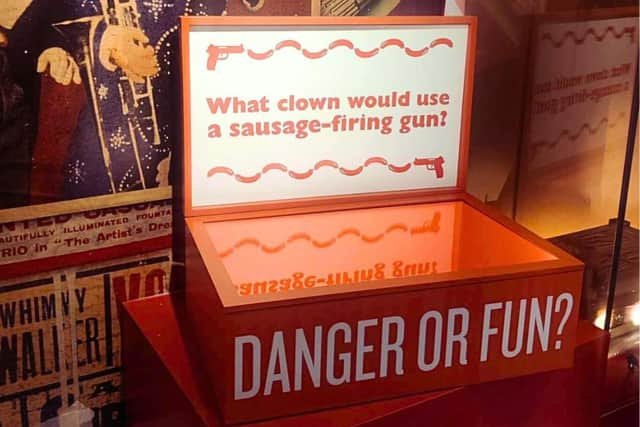

“We are still supported as a venue, the libraries are still open, and the Grundy art gallery is not a statutory service so the council recognises the need and the value in arts and culture.”
This is backed up by strong wording in the council’s initial proposal to establish a cultural plan for Blackpool, which stated that not supporting the strategy “would be detrimental to the growth and sustainability of the cultural sector and hinder the important contribution it can make to the successful transformation of the town, the well-being of its communities and in providing opportunities for young people to achieve their aspirations to be employed in the creative industries sector.”
Paulette says: “I think we're at a really exciting point where there is a sense of collaborative spirit, which is aware of the power that we all have by working together, is ambitious and has a real desire not only bring to Blackpool, but to generate from Blackpool and send Blackpool out into the world.”
Advertisement
Hide AdAdvertisement
Hide AdAs a nationally-renowned gallery, the Grundy has to tread a fine line between showing national and international work and supporting local artists and communities.
This is reflected in its ambitious exhibition programme, which includes national shows such as 2023’s Young Contemporaries as well as an annual Open exhibition for artists based in Blackpool and the Fylde coastline.
This spring, it will be one of the stops on the regional tour of LS Lowry’s painting Going To The Match, while autumn brings LightPool, a festival of artistic responses to the town’s illuminations for which the Grundy commissions work. Last year’s pieces included multicoloured light works by Punjabi-Liverpudlian artist Chila Kumari Singh Burman displayed around the gallery’s entrance and immersive work The Storm Cone by Laura Daly, with music by Lucy Pankhurst, inspired by lost bandstands.
Also bridging the gap between Blackpool’s arts and entertainment tourism offer is Showtown, a new museum that aims to capture the spirit of fun that gave the town the nickname “Las Vegas of the North”.
Advertisement
Hide AdAdvertisement
Hide AdOpening in March, it will feature a mixture of artefacts and interactive exhibits over six galleries on the themes of magic, circus, shows, dance, the seaside and the illuminations. Central to the experience are the stories of the comedians, dancers, acrobats, performers and other entertainers who helped earn Blackpool a reputation as the home of entertainment.
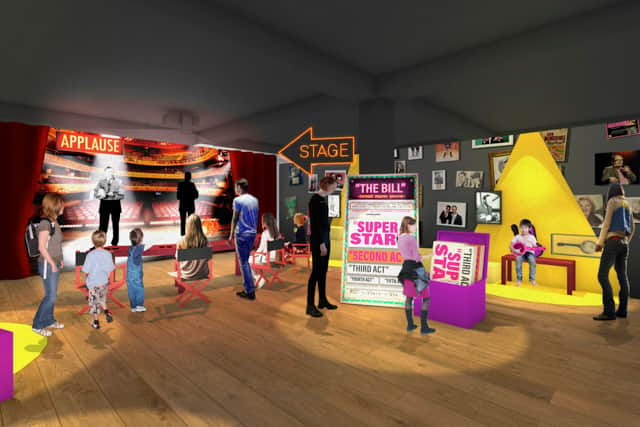

“We're taking people backstage and showing them all the tricks of the fun and entertainment trade,” says Jennifer Tegg, a marketing consultant who has been working with Showtown for the past two years.
“You can take a photograph and appear in a seaside scene on the Promenade, you can do Punch and Judy shows, you can take part in magic tricks. There's a real heart and a real spirit to the museum, which I think is different to any I've been a part of.”
The number of visitors to Blackpool is increasing every year and has completely recovered since Covid, with a record 20m in 2022. Showtown, which has a number of major funders including Blackpool Council and the National Lottery Heritage Fund, anticipates attracting more than 200,000 visitors annually, including many who would make the trip to the town specifically to experience the museum.
Advertisement
Hide AdAdvertisement
Hide AdJennifer says: “That will have an economic impact in terms of tourism in the area, because as well as appealing to people who are already in the resort there’s another audience who are interested either in the nostalgia of being back in Blackpool or coming in for the culture for the first time.
“We play an important role in that overarching regeneration story.”
Comment Guidelines
National World encourages reader discussion on our stories. User feedback, insights and back-and-forth exchanges add a rich layer of context to reporting. Please review our Community Guidelines before commenting.